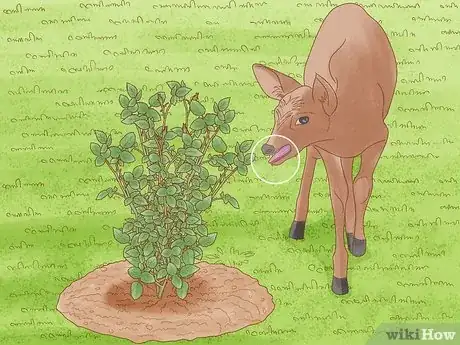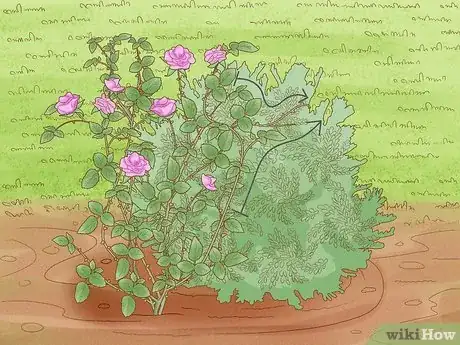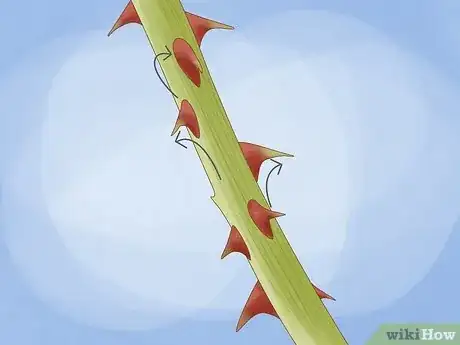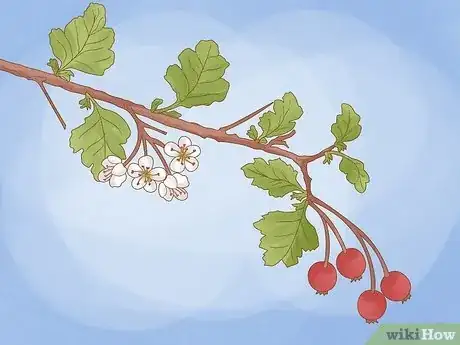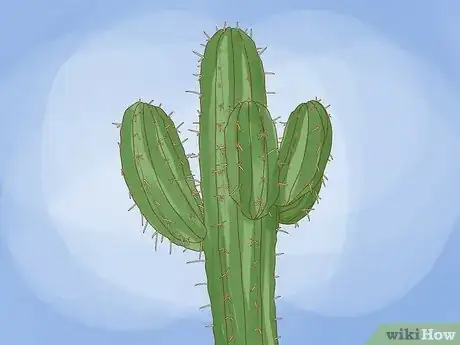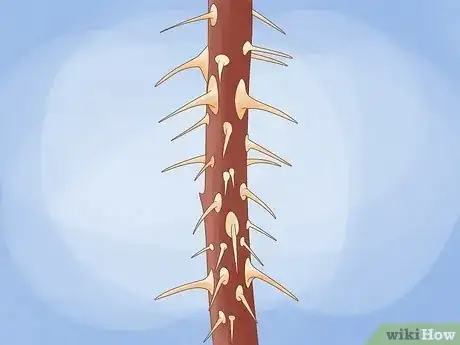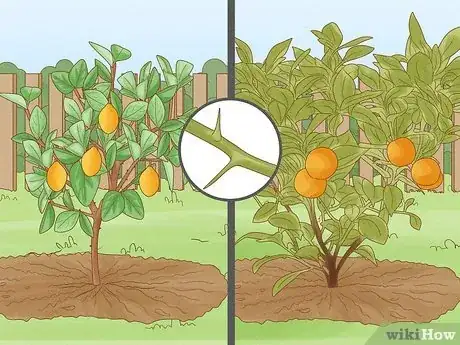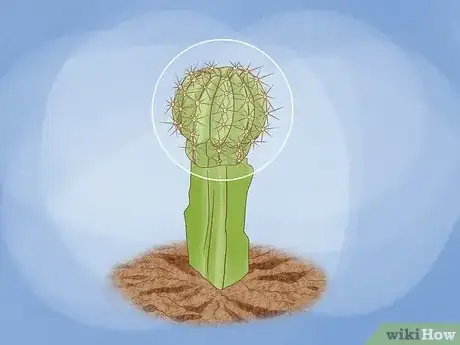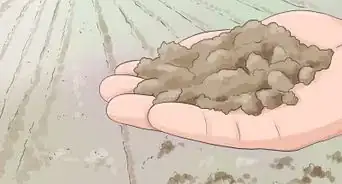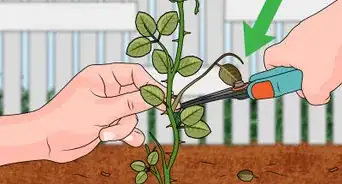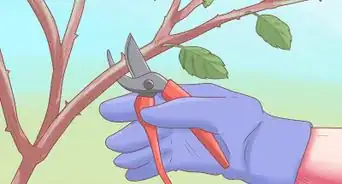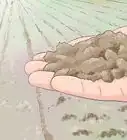This article was co-authored by wikiHow staff writer, Johnathan Fuentes. Johnathan Fuentes is a writer based in the New York City region. His interests as a writer include space exploration, science education, immigration, Latinx cultures, LGBTQ+ issues, and long-form journalism. He is also an avid hiker and has backpacked in Alaska and Newfoundland, Canada. A son of Cuban immigrants, he is bilingual in English and Spanish. Prior to joining wikiHow, he worked in academic publishing and was a freelance writer for science websites. He graduated from Columbia University in 2021, where he studied nonfiction writing and wrote for the student newspaper. He is currently counting down the seconds until the release of Kerbal Space Program 2 in 2023—a game that will almost certainly take up what little free time he has.
There are 8 references cited in this article, which can be found at the bottom of the page.
Learn more...
As everyone knows, even the most beautiful rose has thorns. But why so? Believe it or not, a rose’s thorns—technically called “prickles”—are extremely important for its survival. They do everything from helping rose bushes grow to keeping them safe from predators and casual flower-pickers. And these little barbs are just one of several prickly structures that have evolved on many plants, including roses. Curious to know more? Keep reading to learn the real reasons why roses have prickles, and why countless other plants are covered in barbs too.
Things You Should Know
- Rose thorns, known as “prickles,” protect rose bushes from getting eaten by animals. While rose prickles are not toxic, they can be extremely painful.
- Prickles gives rose bushes an advantage by helping their branches climb over other plants. This helps them grow faster and compete for sunlight.
- Plants can have prickles, thorns, or spines. Thorns are modified branches, prickles are growths on existing branches, and spines are actually a type of leaf.
- Prickles are commonly found on flowering plants, including roses. Thorns are often found on citrus plants, while spines are most common on cactuses.
Steps
What are a rose’s thorns for?
-
1Rose thorns, known as “prickles,” protect roses from getting eaten. If a deer or other herbivore bites the branches, the sharp prickles will hurt its mouth, so animals learn to stay away. This keeps the rose bush safe as it grows, improving the odds that it will produce flowers and seeds, which can then grow into whole new rose bushes.[1]
- Though rose prickles are painful, that aren’t toxic or poisonous. They’re purely a physical defense against predators.[2]
-
2Rose prickles help rose bushes climb over other plants. As a rose bush grows, its downward-pointing prickles “grab” onto nearby plants and trees. This helps them climb higher to get more sunlight than their neighbors.[3]
- In nature, plants compete with each other just like animals do. Prickles give roses an important competitive edge.
Prickles vs. Thorns vs. Spines
-
1Prickles are barbs that grow from the skin of a plant’s branches. They’re made of epidermal cells, the same material that plants use for their outer skin. Unlike thorns, prickles are not a type of branch. They are simply growths that come out of branches.[4]
- Generally speaking, prickles point slightly downward. This prevents stems from being pulled upward by grazing animals.
-
2Thorns are modified branches with a sharp-pointed structure. Like prickles, thorns are designed to protect plants from getting eaten. Thorns grow in the same way that other branches do and are sometimes found at the ends of branches, along with leaves. While they’re not toxic, they can still injure you if you accidentally grab or bump into them.[5]
- Some plants have simple thorns where a single barb appears at the end of a branch. Other plants have branched thorns, meaning that two or more thorns grow next to each other in a tiny, pitchfork-like shape.
-
3Spines are special leaves shaped like needles or spikes. They’re commonly found on cactuses. Some spines are covered with tiny backward-pointing barbs. These act like mini-harpoons, causing the spine to get stuck in your skin, and making them very hard to remove.[6]
- Some cactuses have “glochids,” which are hair-like spines designed to get stuck in your skin when you touch them. They’re extremely painful and cause serious wounds that are difficult to treat.[7]
Plants with Prickles, Thorns, and Spines
-
1Prickles are found on many flowering plants, like roses and thistles. Their flowers attract bees and other pollinating insects, while the prickles keep their stems safe from plant-eating animals.[8] These structures all work together to help the plant survive and reproduce.
- Other plants with prickles include blackberry bushes, raspberry bushes, prickly ash trees, and angelica trees, better known as “devil’s walking sticks.”[9]
-
2Thorns are common on citrus plants like orange and lemon trees. These plants evolved thorns to protect their stems from being eaten before their fruits ripen. Once the fruits are fully ripe, they fall safely away from the tree, allowing animals to eat them and spread the seeds inside.[10]
- Hawthorns and bougainvillea plants also commonly have thorns, as do some cactuses.[11]
-
3Spines are usually found on cactuses. They’re recognizable for their thin, needle-like shape. Many spines are designed to break off and get stuck in your skin, which makes them a very effective form of defense.[12]
- Spines are also found on some non-cactus plants, including barberries and black locust trees.[13]
References
- ↑ https://ipm.missouri.edu/MEG/2013/1/Of-Thorns-Spines-and-Prickles/
- ↑ https://www.theplantaide.com/articles/is-rose-thorn-poisonous-how-to-deal-with-it-after-being-pricked.html
- ↑ https://plants.ces.ncsu.edu/plants/rosa-setigera/
- ↑ https://ipm.missouri.edu/MEG/2013/1/Of-Thorns-Spines-and-Prickles/
- ↑ https://ipm.missouri.edu/MEG/2013/1/Of-Thorns-Spines-and-Prickles/
- ↑ https://ipm.missouri.edu/MEG/2013/1/Of-Thorns-Spines-and-Prickles/
- ↑ http://museum2.utep.edu/archive/plants/DDglochids.htm
- ↑ https://sites.uni.edu/andersow/pricklyplants.html
- ↑ https://herbarium.ncsu.edu/EG/image_sort/defense.html
